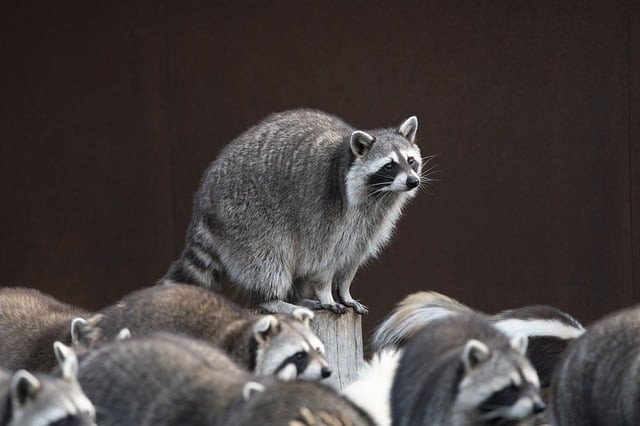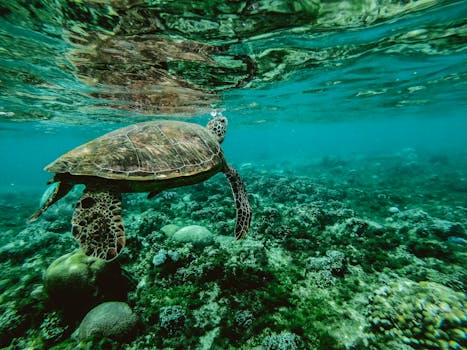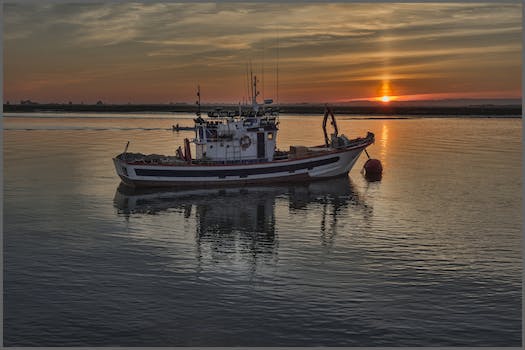-
Table of Contents
- The Importance of Wildlife Pilots in Conservation Efforts
- Training and Education Requirements for Wildlife Pilots
- A Day in the Life of a Wildlife Pilot
- Challenges and Rewards of Being a Wildlife Pilot
- Tips for Aspiring Wildlife Pilots
- Wildlife Pilot Careers: Opportunities and Job Outlook
- Flying Techniques and Safety Measures for Wildlife Pilots
- Wildlife Pilot Equipment and Technology
- Inspiring Stories of Wildlife Pilots Making a Difference
- Q&A
Soar through the skies and protect nature’s treasures as a Wildlife Pilot with Denise Joi.
Denise Joi is a renowned wildlife pilot who has dedicated her career to conserving and protecting wildlife through aerial surveillance and monitoring. With her extensive experience and expertise in aviation, she plays a crucial role in wildlife conservation efforts by providing valuable data and insights to researchers and conservationists. In this article, we will explore the journey of becoming a wildlife pilot with Denise Joi, highlighting the skills, qualifications, and passion required to excel in this unique and rewarding profession.
The Importance of Wildlife Pilots in Conservation Efforts
Becoming a Wildlife Pilot with Denise Joi
The Importance of Wildlife Pilots in Conservation Efforts
Conservation efforts play a crucial role in protecting and preserving our planet’s diverse wildlife. While many people are aware of the work done on the ground, few realize the significant contribution that wildlife pilots make to these efforts. These skilled aviators play a vital role in monitoring and managing wildlife populations, conducting research, and supporting conservation initiatives. In this article, we will explore the importance of wildlife pilots in conservation efforts and gain insights from renowned wildlife pilot, Denise Joi.
One of the primary responsibilities of wildlife pilots is conducting aerial surveys to monitor wildlife populations. From the air, pilots can cover vast areas of land, providing valuable data on animal populations, migration patterns, and habitat conditions. This information is crucial for conservationists and researchers to make informed decisions about wildlife management strategies. As Denise Joi explains, “Aerial surveys allow us to gather data that would be impossible to obtain from the ground alone. It gives us a comprehensive view of the landscape and helps us understand the dynamics of wildlife populations.”
In addition to monitoring populations, wildlife pilots also play a crucial role in managing wildlife populations. They assist in relocating animals to more suitable habitats, especially in cases where human activities have encroached upon their natural habitats. By carefully capturing and transporting animals, pilots ensure their safety and help maintain a balanced ecosystem. Denise Joi emphasizes the importance of this work, stating, “We have a responsibility to protect and preserve our wildlife. By managing populations, we can prevent the extinction of endangered species and maintain the delicate balance of our ecosystems.”
Wildlife pilots also contribute to conservation efforts by conducting research. They work closely with scientists and researchers to collect data on animal behavior, migration patterns, and habitat preferences. This information is invaluable for understanding the needs of different species and developing effective conservation strategies. Denise Joi highlights the significance of research, saying, “By studying wildlife from the air, we can gain insights into their behavior and habitat requirements. This knowledge helps us create conservation plans that are tailored to the specific needs of each species.”
Furthermore, wildlife pilots provide essential support to conservation initiatives on the ground. They transport personnel, equipment, and supplies to remote locations, enabling scientists and conservationists to carry out their work effectively. Their expertise in navigating challenging terrains and adverse weather conditions ensures that conservation efforts are not hindered by logistical challenges. Denise Joi emphasizes the role of wildlife pilots as facilitators, stating, “We are the link between the field and the lab. Our ability to transport personnel and equipment to remote locations is crucial for the success of conservation projects.”
In conclusion, wildlife pilots play a vital role in conservation efforts. Through aerial surveys, population management, research, and logistical support, they contribute significantly to protecting and preserving our planet’s diverse wildlife. As Denise Joi aptly summarizes, “Wildlife pilots are the eyes in the sky, providing valuable data and support to conservationists and researchers. Our work is essential for understanding and safeguarding the delicate balance of our ecosystems.” With their expertise and dedication, wildlife pilots continue to make a lasting impact on the conservation of our planet’s precious wildlife.
Training and Education Requirements for Wildlife Pilots
Becoming a Wildlife Pilot with Denise Joi
Training and Education Requirements for Wildlife Pilots
When it comes to pursuing a career as a wildlife pilot, there are specific training and education requirements that aspiring pilots must meet. This article will delve into the necessary steps and qualifications needed to embark on this exciting and rewarding career path.
First and foremost, obtaining a private pilot’s license is a fundamental requirement for anyone aspiring to become a wildlife pilot. This license is obtained through rigorous training and examination, ensuring that pilots have the necessary skills and knowledge to operate an aircraft safely. The training typically includes both ground school instruction and flight training, covering topics such as aerodynamics, navigation, weather patterns, and emergency procedures.
Once a private pilot’s license is obtained, aspiring wildlife pilots must then pursue additional certifications and ratings to specialize in wildlife management. One such certification is the Wildlife Hazard Management Program (WHMP) certification, which is offered by the Federal Aviation Administration (FAA). This certification focuses on equipping pilots with the skills and knowledge necessary to mitigate wildlife hazards at airports and in wildlife management areas.
To obtain the WHMP certification, pilots must complete a comprehensive training program that covers topics such as wildlife identification, behavior, and habitat management. They must also demonstrate proficiency in techniques for wildlife deterrence and dispersal, as well as wildlife strike reporting and analysis. This certification is crucial for wildlife pilots, as it ensures they are well-prepared to handle the unique challenges and risks associated with flying in wildlife-rich environments.
In addition to the WHMP certification, wildlife pilots may also pursue other specialized training programs to enhance their skills and knowledge. These programs may focus on specific aspects of wildlife management, such as bird control or predator management. By obtaining these additional certifications, pilots can further distinguish themselves in the field and increase their employment opportunities.
While formal education is not a strict requirement for becoming a wildlife pilot, it can certainly be beneficial. Many aspiring pilots choose to pursue a degree in aviation or a related field to gain a deeper understanding of the industry and enhance their career prospects. A degree in aviation can provide a solid foundation in subjects such as aircraft systems, aviation regulations, and aviation safety.
Furthermore, some universities and colleges offer specialized programs or courses in wildlife management and aviation. These programs combine the necessary flight training with coursework in wildlife biology, ecology, and conservation. By pursuing such programs, aspiring wildlife pilots can gain a comprehensive understanding of both aviation and wildlife management, making them highly sought after in the field.
In conclusion, becoming a wildlife pilot requires a combination of training, certifications, and education. Obtaining a private pilot’s license is the first step, followed by specialized certifications such as the WHMP certification. Additional training programs and a degree in aviation or a related field can further enhance a pilot’s skills and knowledge. By meeting these requirements, aspiring wildlife pilots can embark on a fulfilling career that allows them to combine their passion for aviation with their love for wildlife management.
A Day in the Life of a Wildlife Pilot
Becoming a Wildlife Pilot with Denise Joi
A Day in the Life of a Wildlife Pilot
Being a wildlife pilot is not your typical 9-to-5 job. It requires a unique set of skills, a passion for nature, and a love for flying. Denise Joi, a seasoned wildlife pilot with over 15 years of experience, takes us through a typical day in her life, giving us a glimpse into the thrilling and rewarding world of wildlife aviation.
Denise’s day starts early, well before the sun rises. She knows that the best time to spot wildlife is during the early morning hours when animals are most active. After a quick breakfast, she heads to the hangar to prepare her aircraft for the day’s flights. Safety is paramount in her line of work, so she meticulously inspects the plane, checking the engine, fuel levels, and control surfaces.
Once the aircraft is ready, Denise reviews her flight plan for the day. This plan is not like the ones commercial pilots use; it is tailored specifically for wildlife observation and conservation purposes. It includes designated areas where she will fly, known habitats of endangered species, and locations where she will conduct aerial surveys.
As the sun begins to rise, Denise takes off into the sky, her heart filled with anticipation. The first part of her day usually involves conducting aerial surveys to monitor wildlife populations. From her vantage point in the air, she can spot animals that are difficult to see from the ground, such as elusive predators or migratory birds. She carefully documents her observations, noting any changes in population size or behavior.
After completing the surveys, Denise’s focus shifts to conservation efforts. She works closely with wildlife biologists and conservationists to track and protect endangered species. This often involves tracking radio-collared animals from the air, ensuring their safety and monitoring their movements. Denise’s expertise in flying low and slow allows her to get a closer look at these magnificent creatures without disturbing them.
In addition to her conservation work, Denise also assists in wildlife management. This includes activities such as relocating animals to safer habitats, conducting aerial predator control, and monitoring the impact of human activities on wildlife populations. Her role as a wildlife pilot is crucial in ensuring the balance between human development and the preservation of natural habitats.
Throughout the day, Denise encounters various challenges that require quick thinking and adaptability. Weather conditions can change rapidly, forcing her to alter her flight plans or find alternative routes. She also needs to be constantly aware of her surroundings, avoiding potential hazards such as power lines or other aircraft. Her experience and expertise allow her to navigate these challenges with ease, ensuring the safety of both herself and the wildlife she is dedicated to protecting.
As the day comes to a close, Denise heads back to the hangar, her heart filled with a sense of fulfillment. Being a wildlife pilot is not just a job for her; it is a calling. She knows that her work plays a vital role in conserving our planet’s biodiversity and ensuring a future where humans and wildlife can coexist harmoniously.
In conclusion, a day in the life of a wildlife pilot like Denise Joi is anything but ordinary. It is a thrilling and rewarding experience that requires a unique set of skills and a deep passion for nature. From conducting aerial surveys to tracking endangered species, Denise’s work is crucial in the conservation and management of wildlife populations. Her dedication and expertise make her an authoritative figure in the field of wildlife aviation, inspiring others to follow in her footsteps and contribute to the preservation of our planet’s natural treasures.
Challenges and Rewards of Being a Wildlife Pilot

Becoming a Wildlife Pilot with Denise Joi
Challenges and Rewards of Being a Wildlife Pilot
Being a wildlife pilot is not for the faint of heart. It requires a unique set of skills and a deep passion for both aviation and wildlife. Denise Joi, a seasoned wildlife pilot with over 20 years of experience, knows firsthand the challenges and rewards that come with this career.
One of the biggest challenges of being a wildlife pilot is the unpredictable nature of the job. Wildlife pilots are often called upon to fly in remote and rugged areas, where weather conditions can change in an instant. This requires a high level of skill and adaptability, as pilots must be able to navigate through challenging terrain and make split-second decisions to ensure the safety of both themselves and the wildlife they are working with.
Another challenge is the physical demands of the job. Wildlife pilots often spend long hours in the air, flying low and slow to observe and track wildlife. This can be physically exhausting, as pilots must maintain focus and concentration for extended periods of time. Additionally, the job often requires pilots to land and take off in remote areas with limited infrastructure, which can be physically demanding and require a high level of skill.
Despite these challenges, being a wildlife pilot also comes with its fair share of rewards. One of the most rewarding aspects of the job is the opportunity to work closely with wildlife and contribute to their conservation efforts. Wildlife pilots play a crucial role in monitoring and studying wildlife populations, helping to gather data that is essential for conservation efforts. This hands-on involvement with wildlife is incredibly fulfilling and allows pilots to make a tangible impact on the preservation of our natural world.
Another reward of being a wildlife pilot is the opportunity to explore and experience some of the most remote and beautiful places on Earth. Wildlife pilots often find themselves flying over breathtaking landscapes and encountering wildlife in their natural habitats. This unique perspective allows pilots to develop a deep appreciation for the beauty and diversity of our planet, and fosters a sense of awe and wonder that is hard to replicate in any other profession.
In addition to the intrinsic rewards, being a wildlife pilot also offers a range of career opportunities and advancement prospects. Wildlife pilots can work for government agencies, research organizations, or private companies, and can specialize in a variety of areas such as aerial surveys, wildlife tracking, or conservation research. With experience and expertise, wildlife pilots can also advance to leadership positions, where they can oversee and manage conservation projects on a larger scale.
In conclusion, becoming a wildlife pilot is a challenging yet rewarding career choice. Denise Joi’s experience as a wildlife pilot has taught her the importance of adaptability, physical endurance, and a deep passion for both aviation and wildlife. While the job comes with its fair share of challenges, the opportunity to work closely with wildlife, explore remote and beautiful places, and make a tangible impact on conservation efforts makes it all worthwhile. For those with a love for adventure and a desire to protect our natural world, becoming a wildlife pilot may be the perfect career path.
Tips for Aspiring Wildlife Pilots
Becoming a Wildlife Pilot with Denise Joi
If you have ever dreamed of soaring through the skies, exploring remote and untouched landscapes, and making a difference in wildlife conservation, then becoming a wildlife pilot might be the perfect career path for you. As a wildlife pilot, you have the unique opportunity to combine your love for flying with your passion for protecting and studying wildlife. In this article, we will explore some valuable tips for aspiring wildlife pilots, as shared by the experienced and authoritative Denise Joi.
First and foremost, Denise emphasizes the importance of obtaining a solid foundation in aviation. Becoming a pilot requires dedication, hard work, and a commitment to continuous learning. Denise recommends aspiring wildlife pilots to start by obtaining a private pilot license, which serves as the first step towards a career in aviation. This license allows you to fly small aircraft and gain valuable flight experience.
Once you have obtained your private pilot license, Denise advises aspiring wildlife pilots to pursue additional certifications and ratings. These can include instrument ratings, commercial pilot licenses, and multi-engine ratings. These certifications not only enhance your skills as a pilot but also open up more opportunities in the field of wildlife aviation.
In addition to obtaining the necessary certifications, Denise stresses the importance of gaining experience in wildlife conservation and research. Many wildlife pilot positions require a strong background in biology, ecology, or a related field. Volunteering or interning with wildlife organizations, participating in research projects, and attending workshops and conferences can all help you build a solid foundation in wildlife conservation.
Furthermore, Denise highlights the significance of networking and building connections within the wildlife aviation community. Attending aviation events, joining professional organizations, and reaching out to experienced wildlife pilots can provide valuable insights and opportunities. Building relationships with wildlife biologists, researchers, and conservationists can also lead to collaborations and job prospects in the field.
When it comes to job hunting, Denise advises aspiring wildlife pilots to be proactive and persistent. Wildlife pilot positions are highly competitive, and it may take time and effort to secure a job. She recommends regularly checking job boards, reaching out to wildlife organizations directly, and staying up to date with industry news and developments. Additionally, building a strong resume and preparing for interviews are crucial steps in the job application process.
Lastly, Denise emphasizes the importance of maintaining a strong commitment to wildlife conservation and ethical flying practices. As a wildlife pilot, you have a responsibility to minimize disturbance to wildlife and their habitats. This includes adhering to flight regulations, avoiding sensitive areas, and respecting wildlife behavior. By prioritizing the well-being of the animals and ecosystems you encounter, you can make a positive impact as a wildlife pilot.
In conclusion, becoming a wildlife pilot is an exciting and rewarding career choice for those with a passion for flying and wildlife conservation. By obtaining the necessary certifications, gaining experience in wildlife research, networking within the industry, and staying persistent in the job hunt, aspiring wildlife pilots can turn their dreams into reality. With the guidance and expertise of experienced professionals like Denise Joi, the path to becoming a wildlife pilot becomes clearer and more attainable. So, if you are ready to take flight and make a difference in the world of wildlife conservation, start your journey today.
Wildlife Pilot Careers: Opportunities and Job Outlook
Becoming a Wildlife Pilot with Denise Joi
Wildlife Pilot Careers: Opportunities and Job Outlook
If you have a passion for aviation and a love for wildlife, a career as a wildlife pilot may be the perfect fit for you. Wildlife pilots play a crucial role in conservation efforts, providing aerial support for wildlife surveys, monitoring, and management. In this article, we will explore the opportunities and job outlook for aspiring wildlife pilots, with insights from experienced wildlife pilot Denise Joi.
Opportunities in Wildlife Pilot Careers
Wildlife pilot careers offer a wide range of opportunities for those interested in combining their love for flying with their passion for wildlife. One of the most common roles for wildlife pilots is conducting aerial surveys to monitor wildlife populations. These surveys are essential for gathering data on animal populations, migration patterns, and habitat usage. Wildlife pilots also assist in tracking and monitoring endangered species, helping conservationists make informed decisions about their protection.
In addition to surveying, wildlife pilots are often involved in wildlife management activities. This can include activities such as capturing and relocating animals, conducting predator control operations, and assisting in the transportation of injured or orphaned wildlife. These tasks require not only excellent flying skills but also a deep understanding of wildlife behavior and conservation principles.
Job Outlook for Wildlife Pilots
The job outlook for wildlife pilots is promising, with a growing demand for their unique skill set. As conservation efforts continue to expand, the need for aerial support in wildlife management becomes increasingly important. This demand is driven by government agencies, non-profit organizations, and private companies dedicated to wildlife conservation.
Denise Joi, an experienced wildlife pilot with over 15 years of flying under her belt, shares her insights on the job outlook for aspiring wildlife pilots. According to Denise, “There is a growing recognition of the value that wildlife pilots bring to conservation efforts. As a result, more organizations are investing in aerial support, creating new opportunities for pilots who are passionate about wildlife.”
Denise also highlights the importance of specialized training for aspiring wildlife pilots. “While a commercial pilot’s license is a prerequisite, additional training in wildlife management and conservation is highly beneficial. It helps pilots understand the unique challenges and responsibilities associated with flying in wildlife conservation.”
Transitional Phrase: With the increasing demand for wildlife pilots, it is essential for aspiring pilots to equip themselves with the necessary skills and knowledge.
To increase your chances of success in this field, Denise recommends gaining experience in related roles, such as aerial photography or surveying. “These roles provide valuable exposure to the unique challenges of flying in remote and rugged environments, which are often encountered in wildlife pilot careers.”
Denise also emphasizes the importance of networking and building relationships within the wildlife conservation community. “Attending conferences, volunteering with conservation organizations, and connecting with experienced wildlife pilots can open doors to new opportunities and mentorship.”
In conclusion, a career as a wildlife pilot offers a unique blend of aviation and wildlife conservation. With a growing demand for their skills, aspiring wildlife pilots have a promising job outlook. However, specialized training, experience, and networking are crucial for success in this field. By combining their love for flying with a passion for wildlife, aspiring wildlife pilots can make a significant impact on conservation efforts and contribute to the protection of our planet’s precious biodiversity.
Flying Techniques and Safety Measures for Wildlife Pilots
Becoming a Wildlife Pilot with Denise Joi
Flying Techniques and Safety Measures for Wildlife Pilots
When it comes to flying in the wild, there are specific techniques and safety measures that every wildlife pilot must be well-versed in. As an experienced wildlife pilot, I have spent countless hours navigating the skies, ensuring the safety of both the animals and the aircraft. In this article, I will share some valuable insights into the flying techniques and safety measures that are essential for any aspiring wildlife pilot.
First and foremost, one must understand the unique challenges that come with flying in wildlife areas. These areas are often remote and inaccessible, with unpredictable weather conditions and rugged terrain. As a wildlife pilot, it is crucial to have a thorough understanding of the local geography, including the location of potential hazards such as power lines, tall trees, or other obstacles that could pose a risk to both the aircraft and the wildlife.
One of the most important flying techniques for wildlife pilots is maintaining a low and slow approach. This allows for better visibility and reduces the risk of startling or disturbing the animals below. By flying at a lower altitude and reducing the speed, pilots can observe the wildlife from a safe distance without causing unnecessary stress or disruption to their natural habitat.
In addition to a low and slow approach, wildlife pilots must also master the art of precision flying. This involves maintaining a steady and controlled flight path, making small adjustments as necessary to avoid sudden movements that could startle the animals. It is essential to be aware of wind conditions and adjust the flight accordingly to ensure a smooth and stable flight.
Safety is paramount in wildlife flying, and there are several measures that pilots must adhere to. One of the most critical safety measures is conducting a thorough pre-flight inspection. This includes checking the aircraft for any signs of damage or malfunction, ensuring that all systems are functioning correctly, and verifying that the necessary safety equipment is on board. It is also crucial to have a comprehensive understanding of emergency procedures and to be prepared for any unforeseen circumstances that may arise during the flight.
Another safety measure that wildlife pilots must be well-versed in is wildlife avoidance. This involves being able to identify and anticipate the behavior of different species, as well as understanding their habitats and migration patterns. By being knowledgeable about the wildlife in the area, pilots can take proactive measures to avoid potential collisions or disturbances.
Furthermore, wildlife pilots must also be proficient in radio communication. This allows for effective coordination with ground crews, other pilots, and air traffic control. Clear and concise communication is essential for ensuring the safety of all parties involved and for providing updates on wildlife sightings or potential hazards.
In conclusion, becoming a wildlife pilot requires a unique set of flying techniques and safety measures. By mastering the art of low and slow flying, precision flying, and wildlife avoidance, pilots can navigate the skies with confidence and ensure the safety of both the animals and the aircraft. Additionally, conducting thorough pre-flight inspections, being prepared for emergencies, and maintaining effective radio communication are crucial for a successful and safe wildlife flying experience. As an authoritative voice in the field, I encourage all aspiring wildlife pilots to prioritize safety and continuously strive to enhance their skills and knowledge in this specialized area of aviation.
Wildlife Pilot Equipment and Technology
Becoming a Wildlife Pilot with Denise Joi
Wildlife Pilot Equipment and Technology
As a wildlife pilot, having the right equipment and technology is crucial for ensuring the safety and success of your missions. In this section, we will explore the essential tools and technologies that every wildlife pilot should have at their disposal.
First and foremost, a reliable aircraft is the foundation of any wildlife pilot’s equipment. The aircraft should be capable of maneuvering in various terrains and weather conditions, as wildlife monitoring often takes place in remote and challenging environments. Additionally, the aircraft should have a spacious cabin to accommodate the necessary equipment and personnel.
To effectively track and monitor wildlife, a wildlife pilot needs advanced surveillance equipment. This includes high-resolution cameras, thermal imaging systems, and radar technology. These tools enable pilots to capture detailed images and videos of wildlife, even in low-light or adverse weather conditions. The data collected through these surveillance systems is invaluable for research and conservation efforts.
In addition to surveillance equipment, wildlife pilots rely on communication systems to stay connected with ground teams and other pilots. Two-way radios and satellite phones are essential for maintaining constant communication, especially in areas with limited or no cellular coverage. This ensures that pilots can quickly relay important information and coordinate their efforts with other team members.
To navigate through vast wilderness areas, wildlife pilots heavily rely on GPS technology. GPS systems provide accurate positioning data, allowing pilots to precisely locate wildlife populations and monitor their movements. This information is crucial for understanding animal behavior patterns and identifying potential threats to their habitats.
Furthermore, wildlife pilots need specialized equipment for capturing and handling wildlife. This includes tranquilizer guns, nets, and specialized containers for transporting animals safely. These tools are essential for conducting wildlife surveys, capturing injured or endangered animals for rehabilitation, and relocating animals to safer habitats.
In recent years, drones have become an increasingly valuable tool for wildlife pilots. Drones equipped with high-resolution cameras and thermal imaging sensors can access areas that are difficult or dangerous for manned aircraft to reach. They can provide real-time aerial footage, allowing pilots to monitor wildlife populations and detect any signs of distress or illegal activities.
As technology continues to advance, wildlife pilots must stay up to date with the latest innovations in their field. This includes advancements in surveillance equipment, communication systems, and navigation technology. By embracing these advancements, wildlife pilots can enhance their effectiveness and contribute to the conservation and protection of wildlife.
In conclusion, being a wildlife pilot requires having the right equipment and technology to carry out missions safely and effectively. From reliable aircraft to advanced surveillance systems, communication tools, and specialized equipment for capturing and handling wildlife, each piece of equipment plays a crucial role in the success of a wildlife pilot’s work. Additionally, staying updated with the latest technological advancements is essential for wildlife pilots to adapt to the ever-changing demands of their profession. With the right equipment and technology, wildlife pilots like Denise Joi can make a significant impact in the field of wildlife conservation.
Inspiring Stories of Wildlife Pilots Making a Difference
Becoming a Wildlife Pilot with Denise Joi
Wildlife pilots play a crucial role in conservation efforts around the world. These skilled aviators navigate the skies to monitor and protect wildlife populations, ensuring their survival for future generations. One such inspiring story is that of Denise Joi, a wildlife pilot who has dedicated her life to making a difference.
Denise’s journey began with a deep love for both flying and wildlife. As a child, she would spend hours watching birds soar through the sky, dreaming of one day being able to join them. This passion led her to pursue a career in aviation, where she honed her skills as a pilot and gained invaluable experience.
After obtaining her pilot’s license, Denise knew she wanted to use her skills to make a positive impact on the world. She discovered the field of wildlife aviation and was immediately drawn to its mission. Wildlife pilots like Denise are responsible for conducting aerial surveys, tracking animal movements, and assisting in conservation efforts.
One of the most significant challenges faced by wildlife pilots is the vastness of the areas they need to cover. From dense forests to remote deserts, these pilots must navigate through diverse terrains to locate and monitor wildlife populations. This requires not only exceptional flying skills but also a deep understanding of the animals’ behavior and habitats.
Denise’s expertise in flying and her passion for wildlife made her a perfect fit for this demanding role. She underwent specialized training to enhance her knowledge of wildlife biology and conservation techniques. This allowed her to not only fly the aircraft but also contribute to the scientific research and data collection efforts.
In her career, Denise has had the opportunity to work on various projects, each with its unique set of challenges. One of her most memorable experiences was assisting in the relocation of endangered rhinos in Africa. These magnificent creatures were at risk due to poaching and habitat loss. Denise’s role was to track their movements from the air, ensuring their safety during the relocation process.
The work of wildlife pilots like Denise extends beyond monitoring and research. They also play a crucial role in combating illegal activities such as poaching and illegal wildlife trade. By patrolling protected areas from the air, they can detect and report any suspicious activities to the authorities, helping to protect vulnerable species from harm.
Denise’s dedication and passion for her work have not gone unnoticed. She has received numerous accolades for her contributions to wildlife conservation, including the prestigious Wildlife Pilot of the Year award. However, for Denise, the true reward lies in knowing that her efforts are making a difference in the lives of the animals she works tirelessly to protect.
In conclusion, becoming a wildlife pilot requires a unique combination of flying skills, wildlife knowledge, and a deep passion for conservation. Denise Joi’s inspiring story showcases the impact that these dedicated individuals can have on wildlife populations. Through their aerial surveys, tracking, and conservation efforts, wildlife pilots like Denise are instrumental in ensuring the survival of endangered species and preserving our planet’s biodiversity. Their work serves as a reminder of the importance of protecting and cherishing the natural world we share with these magnificent creatures.
Q&A
1. What qualifications are required to become a wildlife pilot?
Qualifications typically include a commercial pilot’s license, instrument rating, and a minimum number of flight hours.
2. What kind of aircraft do wildlife pilots typically fly?
Wildlife pilots often fly small aircraft such as helicopters or fixed-wing planes, depending on the specific job requirements.
3. What are the main responsibilities of a wildlife pilot?
Wildlife pilots are responsible for conducting aerial surveys, monitoring wildlife populations, transporting personnel and equipment, and assisting in wildlife management activities.
4. Is there a specific degree required to become a wildlife pilot?
While a specific degree is not always required, a background in wildlife biology, ecology, or a related field can be beneficial.
5. Are there any physical requirements to become a wildlife pilot?
Good physical health and the ability to pass a medical examination are generally required to become a wildlife pilot.
6. What are the typical working conditions for a wildlife pilot?
Wildlife pilots often work in remote and challenging environments, including rugged terrain, extreme weather conditions, and potentially dangerous wildlife encounters.
7. Are there any specific skills or qualities that are important for a wildlife pilot?
Strong flying skills, excellent decision-making abilities, adaptability, and a passion for wildlife conservation are important qualities for a wildlife pilot.
8. How can one gain experience as a wildlife pilot?
Gaining flight experience through flight schools, internships, or working as a flight instructor can help aspiring wildlife pilots gain the necessary experience.
9. Are there any additional certifications or training required for wildlife pilots?
Additional certifications or training may be required depending on the specific job, such as aerial wildlife survey techniques or wildlife capture and handling.In conclusion, Denise Joi’s journey of becoming a wildlife pilot showcases her passion for wildlife conservation and her determination to make a positive impact in the field. Through her extensive training and experience, she has developed the necessary skills and knowledge to navigate challenging terrains and assist in wildlife research and management efforts. Denise’s dedication to protecting and preserving wildlife makes her a valuable asset in the field of wildlife piloting.
![]()











